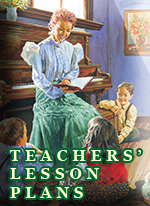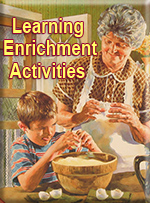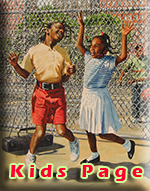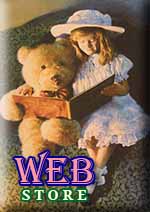|
|
||
Students sample publishing SANDY - The books hang off paper-clip hooks in the Firwood Elementary School library, with titles such as "The Foal and the Unicorn "My Friendly Monster," "Bill's Pig. Their covers are purple
and black and pink and brown, laminated construction paper with
black plastic bindings. Some are typeset; others are handwritten.
Inside are crayoned pictures of children and clouds, monsters
and pigs.
They are the works of young authors, the product of Firwood Elementary's Hoofprints publishing center. Hoofprints is an in-house publishing program run by teachers and parent volunteers that allows students to write, illustrate and publish their own books. As school reform starts
to take hold in Oregon, teachers at Firwood say more elementary
schools are looking to book publishing as a way to get children
more involved in learning. In many classrooms around the Portland area, teachers help Students publish books, bound perhaps with plastic spirals or even string. Actual publishing centers, devoted to book making, are more rare. Menlo Park Elementary School in the David Douglas School District just received a $10,000 grant to establish a high-technology publishing center there."They're becoming more common," said Principal Teri Prochaska. "We've had a lot of visitors in the past couple of years." Under Oregon's Education Act for the 21st Century, students will have to demonstrate their proficiency in communication: reading, writing, speaking and listening. Publishing a book is one
way of doing just that. Carol Black, school reform specialist with the Oregon Department of Education, said Firwood's publishing center is a model for other Oregon schools. Since 1984, Oregon has had statewide writing assessment, prompting schools across the state to emphasize writing. "Firwood has just taken it a step further," Black
said. Firwood started Hoofprints in 1991 with money from a state grant. Students published more than 600 books so far. This fall, parent volunteers and students will have a new room to house their computers, binding equipment and art supplies. With the program well established, students such as Heather Cole, a fourth-grader at Firwood, are already on their second or third book. "I'm starting on a rough draft," Heather said. "About an old fashioned girl moving to a new place." Michele Watts, a K-2 grade teacher at Firwood, said children learn to communicate more effectively and also get a boost to their self-esteem, "They blossom when they see other people reading and enjoying what they wrote," said Watts, who helped start Hoofprints three years ago. And students said professional authors who come to the school to share their work give them inspiration. "It's like you might write when you grow up and become famous," Heather said. At Firwood Elementary last week, Grant High graduate and children's book author Chris K. Soentpiet shared his techniques for illustrating a book. Libby Draeger, a fourth-grader, said she was excited to find out that Soentpiet worked in roughly the same way as she does. "When I do illustrating, I do a pencil sketch, I write the story, and I do a lot of rough drafts," she said. It's getting children to bring their writing, artistic, technical and communications skills together into one project that Ruth Wick, principal at Menlo Park, believes is important part of the publishing centers. "We're trying to have a way to integrate aspects of the curriculum to see how they tie together," Wick said. When Menlo Park's center is established this year, students will be able to print their projects out on a color printer. They can also print out artwork or photos scanned into the computer to illustrate their books. Wick said students will write autobiographies or biographies of senior citizens who live in a retirement center across the street. In addition, children who speak another language at home - including Spanish, Russian or Romanian - can publish books in translation. She said the students would also experiment with other ways of telling a story, using computer graphics and video cameras. "It's perfect for kids to see what they've written in a nice format," she said. And it's nice for other parents, teachers and other students as well to see something preserved in a library that may otherwise be lost in the corner of a closet. Such as a poem that Erin Stangel, a Firwood student, wrote: "Grandmas are wrinkled/ Grandmas are smart/ Grandmas have something right in their heart." Courtenay Thompson reports on school districts and education for The Oregonian's MetroEast Bureau. She may be reached by phone at 294-5938; by fax at 667-9973,- or by mail at P.O. Box 1398, Gresham 97030. |





 On
the cover of one, scrawled in purple, "We're Lost."
On
the cover of one, scrawled in purple, "We're Lost."